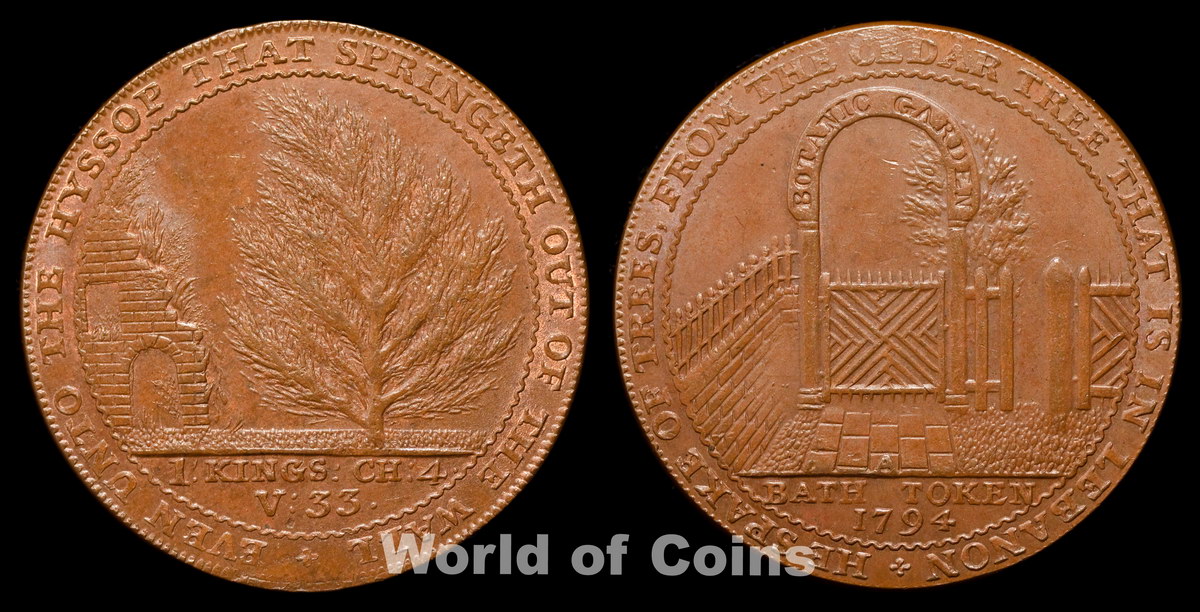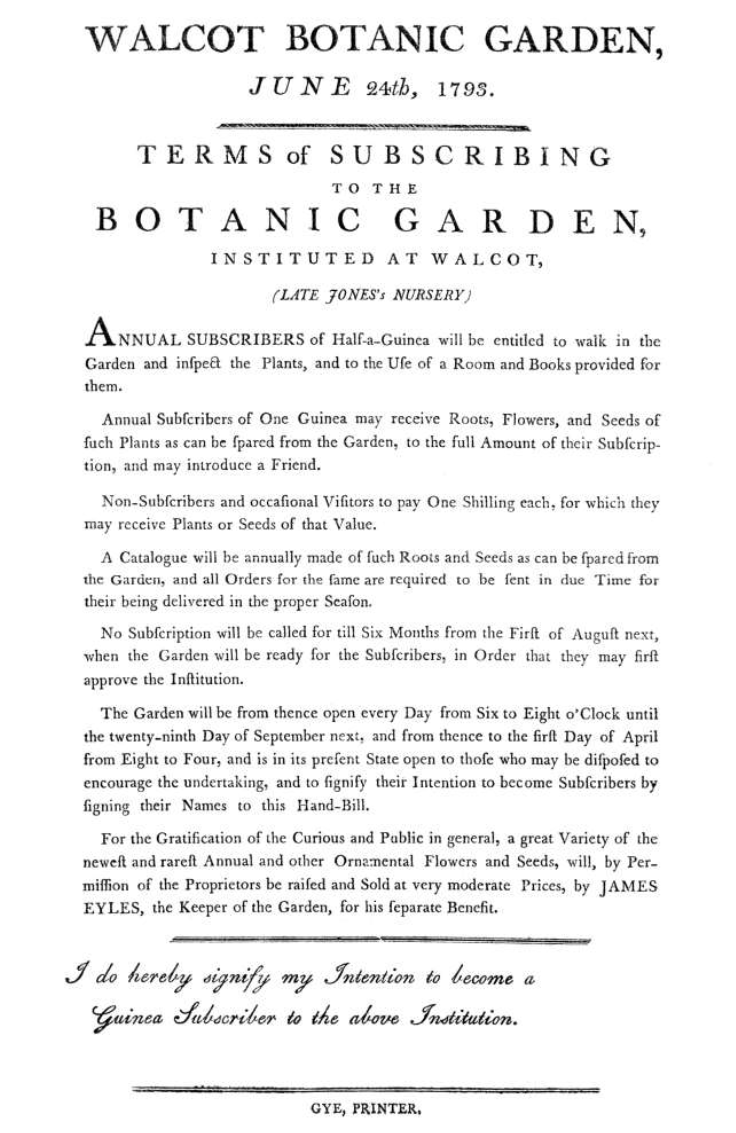
Online collections
monedastodas.com
All collections » Tokens » Bath Halfpenny
On the front side there is an arch with a gate, a palisade and a paved stone path, a part of another gate is visible to the right, and a brick wall with a fence in the upper part is visible to the left. On the arch is the inscription: “BOTANIC GARDEN”. Circle legend: “HE SPAKE OF TREES, FROM THE CEDAR TREE THAT IS IN LEBANON.”

On the reverse side, on the left side,
there are ruins overgrown with grass, and on the right, a large tree. Circle
legend: “EVEN UNTO THE HYSSOP THAT SPRINGETH OUT OF THE WALL”.
Edge is smooth.
Engraver - Arnold (Arnold), manufacturer
- Latvich (Lutwyche). Issued 10 cwts (1 cwts = 100 lb = 45.359237
kg).
A token issued by John Gelly
illuminates the short life of his botanical garden. The garden was
on Camden Road in Bath, on the site of what is now Prospect Place. The
circular legend on the token is taken from the First Book of Kings and refers to
the wisdom of Solomon: "... and he spoke about trees: from the cedar in Lebanon
to Hyssop growing from the wall ...".
Many have heard of the Lebanese cedar. It
is an evergreen coniferous tree that reaches 100 feet in height. They
were brought to Britain between 1670 and 1680. Mature trees of the
Lebanon cedar are among the most picturesque trees in Britain. Their
massive trunks and wide spreading crowns add beauty and dignity to gardens and
parks. No tree imported into Britain has such sacred and historical
associations that add more charm to gardens.
Hyssop (Hyssop
officinalis )
was probably well known to those who practiced the culinary arts, since it was
used in the past as a kitchen herb, and also grown for use in home medicine. It
has been used to treat colds and lung infections, as well as bruises and
swelling. The habitat of Hyssop extends from Southern Europe to
Central Asia.

The token is made in a bright and
slightly naive style, which fits quite well with the perky pamphlet issued for
the opening of the garden. In June 1793, the conditions for
purchasing a subscription to the Walcot Botanic Garden were published. An
annual subscription, worth half a guinea, allowed you to stroll through the
garden, look at the plants and use the library. It was also
possible to get root crops, flowers and seeds in the amount of the subscription
price. Garden keeper James Ailes also grew "an enormous variety of
the latest and rarest annual and ornamental flowers at very moderate prices for
his own benefit." Towards the end of the summer of 1793, a more
detailed prospectus was published in the Bath Chronicle, adding new categories:
the most expensive at two guineas was for "botanical students and those who need
the help of an assistant."
Gelly gave his thoughts on the
organization of the garden and expressed his gratitude for the help of William
Sole, another botanist from Bath. He also hoped that his garden
would diversify the entertainment of Bath as a resort town. And
although he himself was a professor of law, he stated that he had studied botany
from an early age and "accumulated a very large and expensive collection of
plants, surpassing the few available in the kingdom." Being
employed in the legal field, he could not fully manage the affairs of the garden
on his own and needed the help of an experienced assistant.
William Sole (1741-1802) was apparently
such a helper, as Gelly thanked him for his easy and polite conversation on
botanical topics, as well as for many valuable specimens for his collection. Solet
was a botanist and an early member of the Linnean Society when it was founded in
1788. In 1798 he published his most important scientific work, Menthae
Britannicae ,
whose terminology was used throughout the 19th century.
The fate of the garden during 1794, at
the time of the issue of the token, is unknown. It was an
inauspicious time. The outbreak of war with France in 1793 led to
financial instability and some of Bath's banks and firms collapsed and were
declared bankrupt. In addition, the botanical garden was located on
the outskirts of the city and attracted a limited number of visitors, and there
were already several small gardens in Bath. As a result, in the
absence of official evidence of the reasons, in March 1795 Gelly went bankrupt
and all his property and considerable property was sold at auction. After
this failure, Gelly no longer engaged in botanical enterprises. He
was an avid collector of trade tokens and was involved in the production of a
series of badminton tokens.
Gelly died in 1813 and is mentioned in
the Gentlemen's Magazine as a lawyer and clerk of the parish of Wolcot in the
suburbs of Bath, where his botanical garden was located.